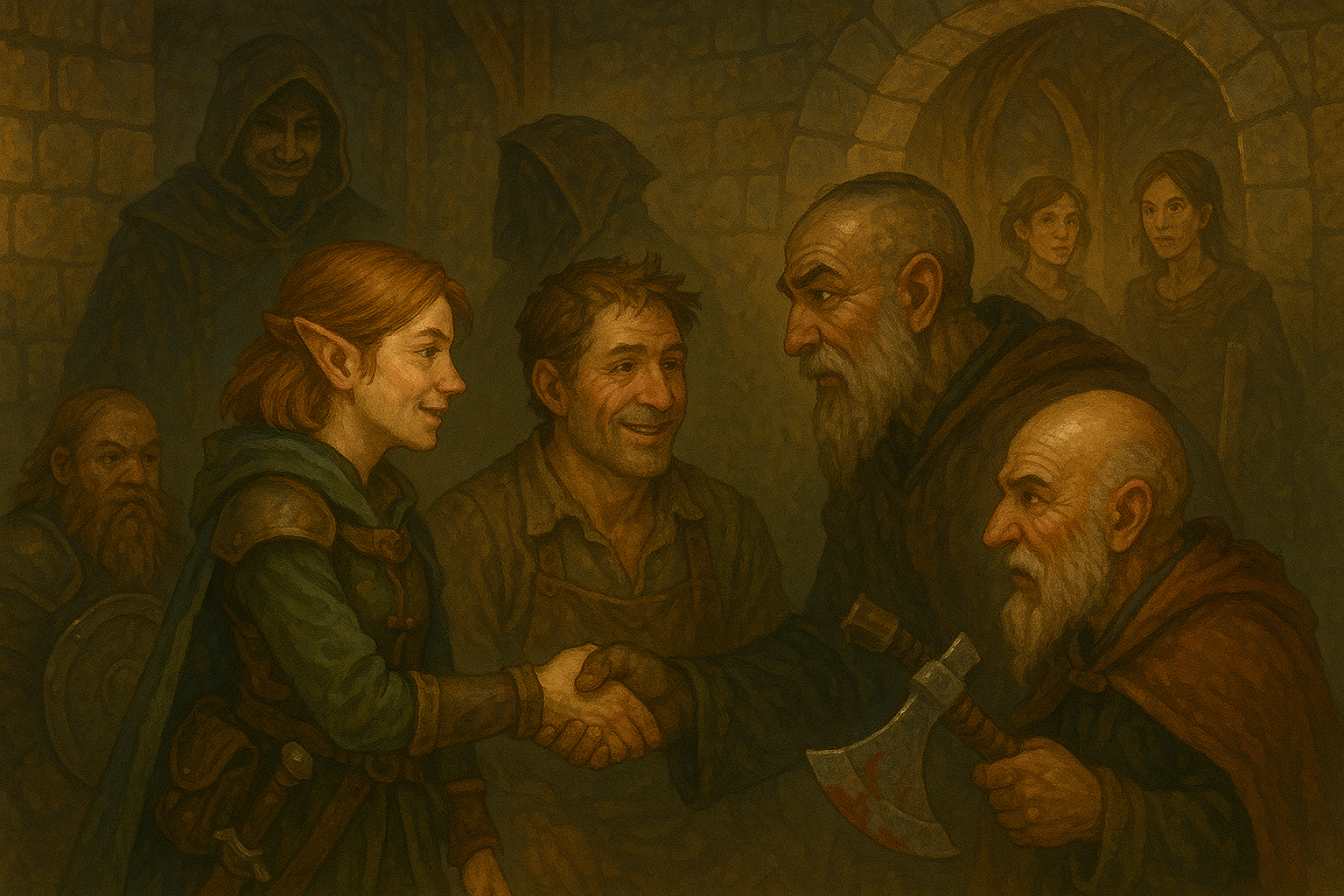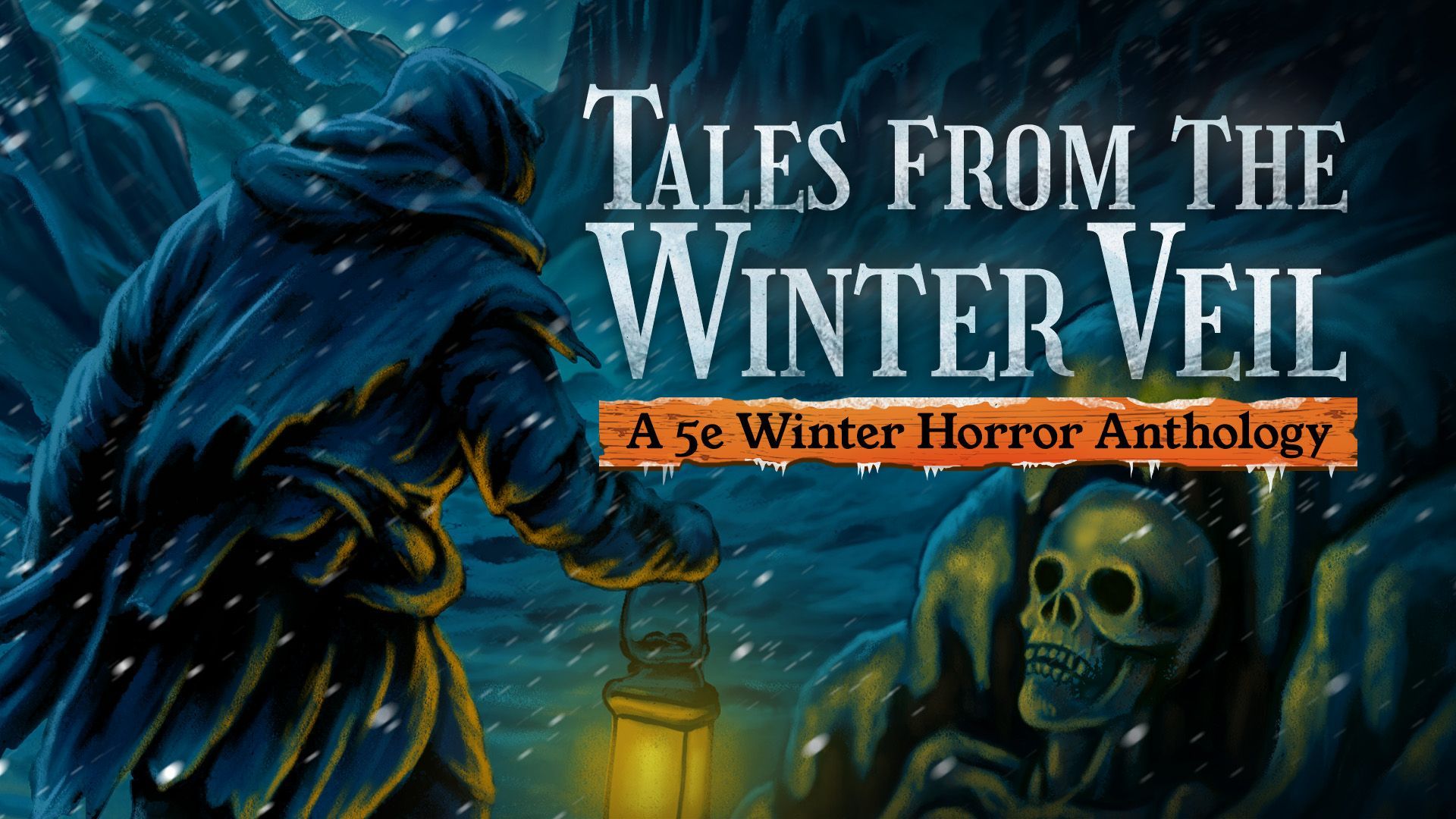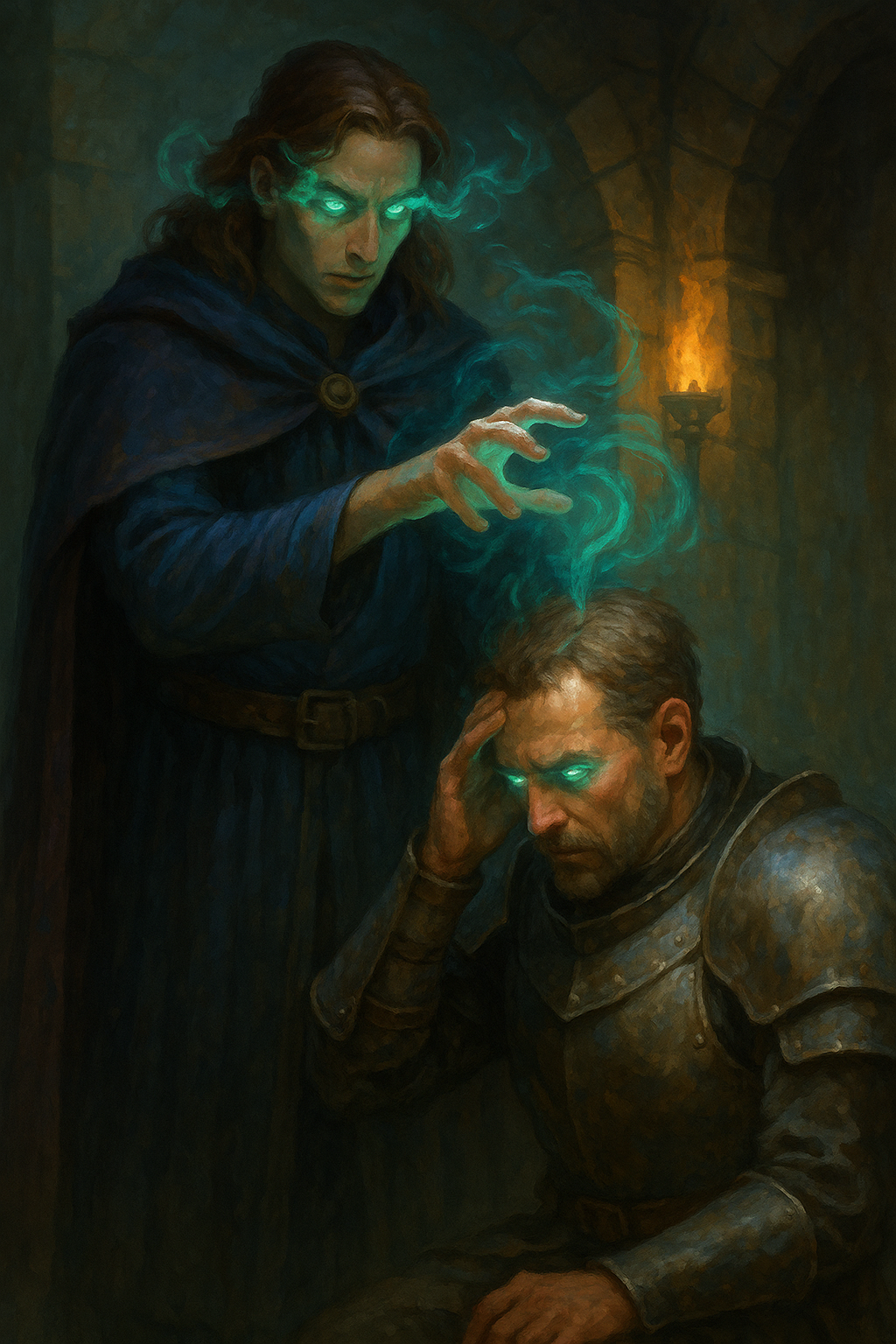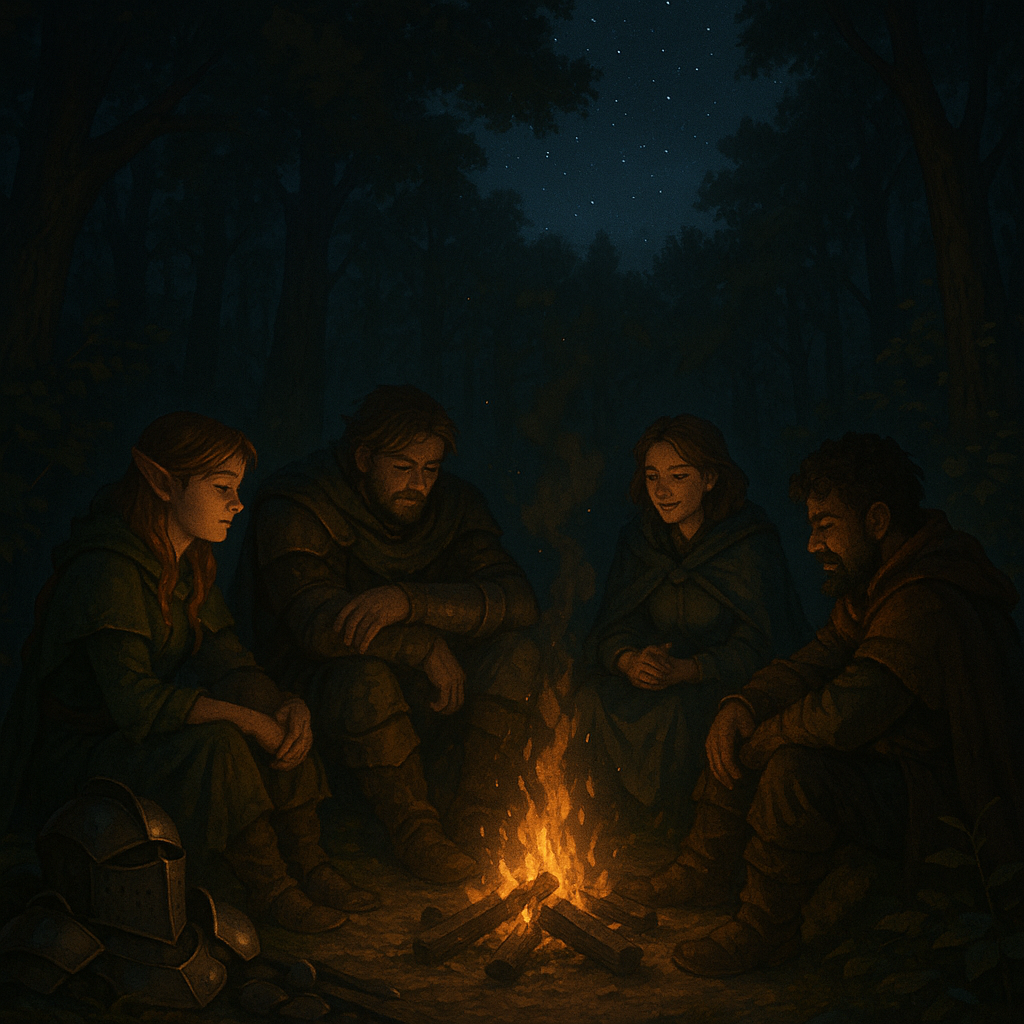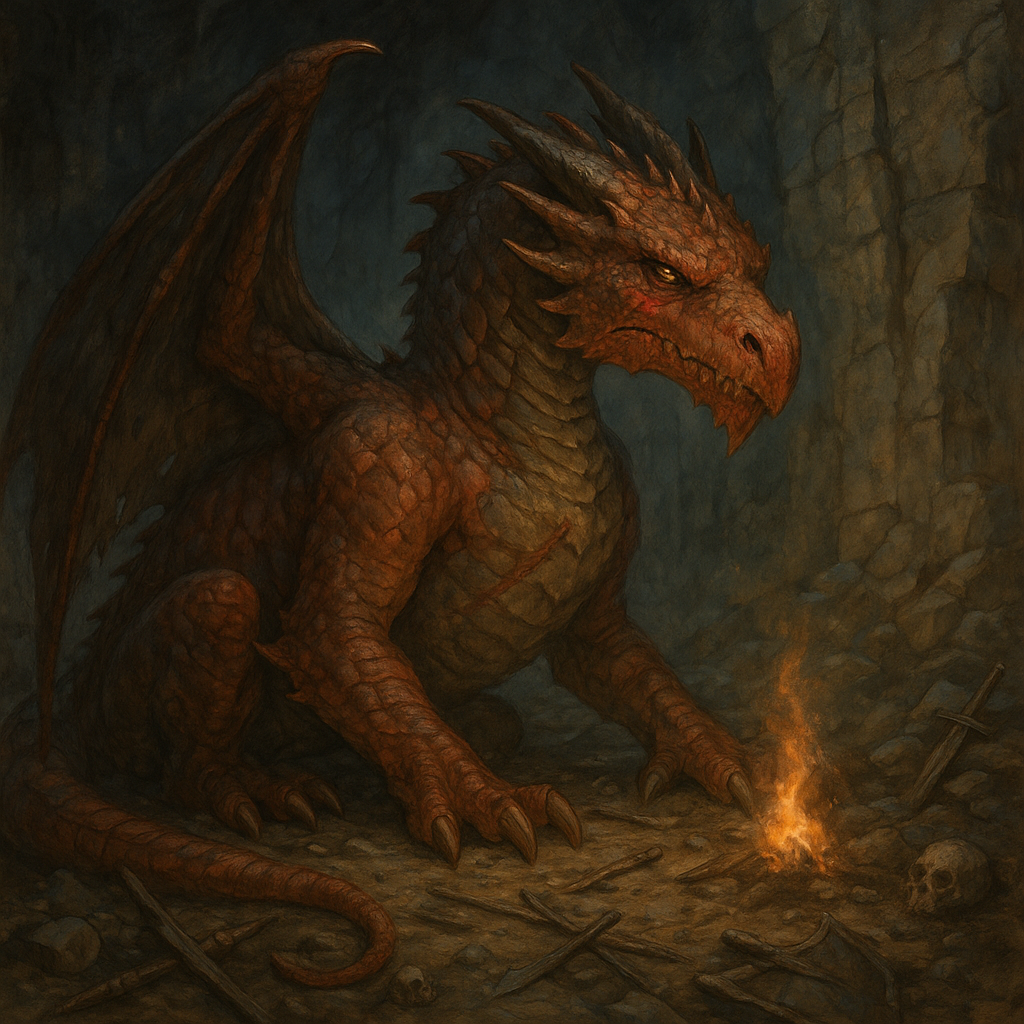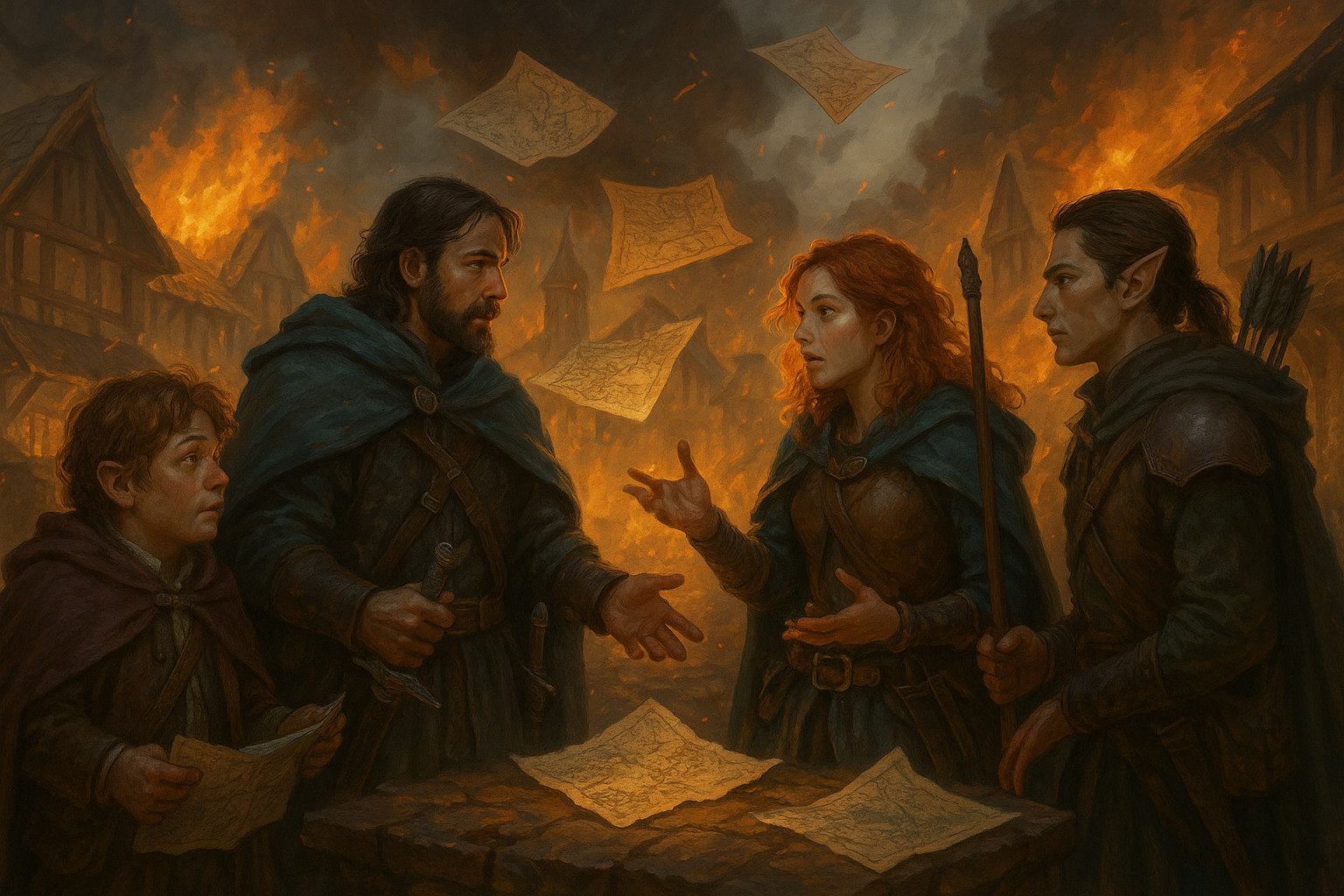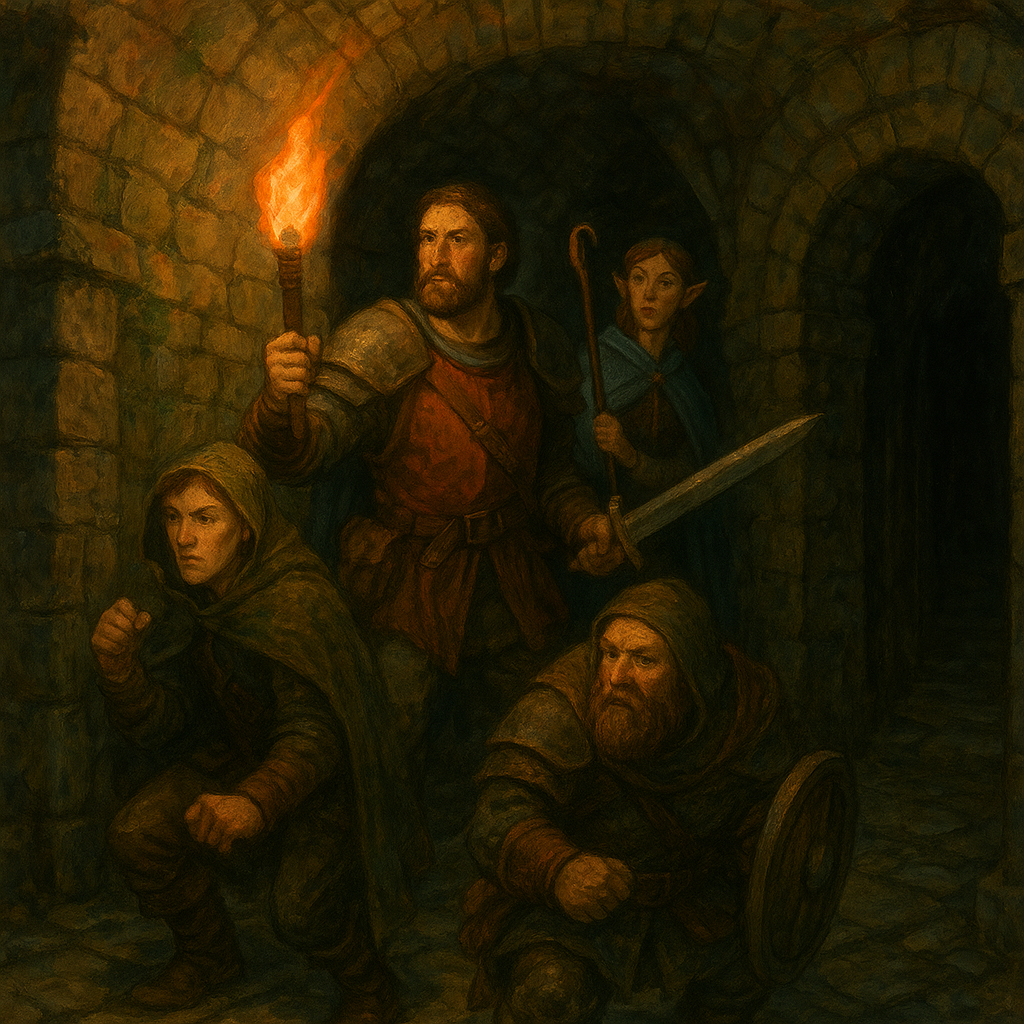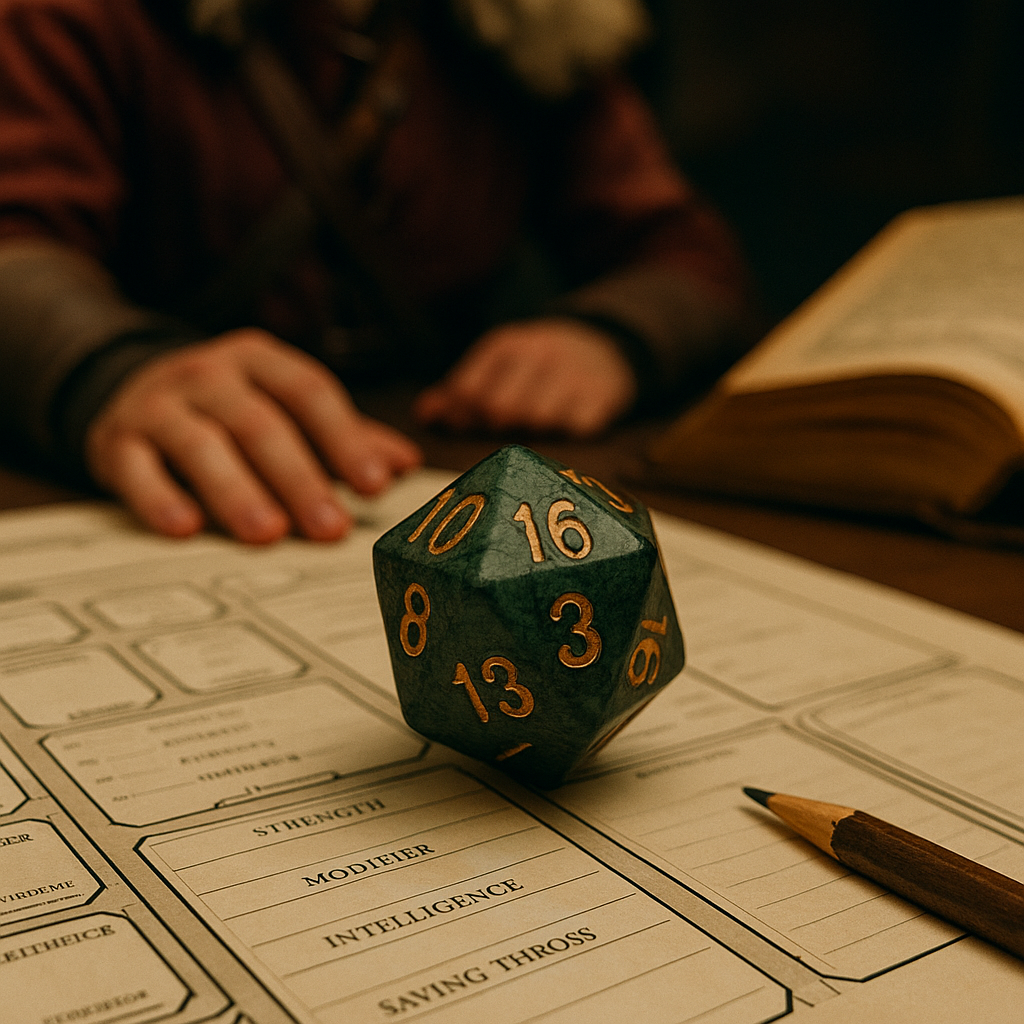Dynamic NPCs: Evolving Relationships Over Campaign Time
Give those NPCs life!
Dear Readers,
When you think back on your favorite Dungeons & Dragons (or [insert your favorite TTRPG here]) campaigns, what sticks with you most vividly? Sure, it might be that dragon you finally defeated, or that one natural 20 that saved the whole party from annihilation. But for many players, what really lingers in memory isn’t just the epic fights—it’s the characters. The people they met along the way. The barkeep who became an unlikely ally. The rival adventurer who constantly challenged them. The childhood friend who fell to darkness.
These characters—the non-player characters (NPCs)—are more than just background dressing. They are the connective tissue that ties a campaign together. They give your players something to care about, something to lose, and something to fight for. But too often in our games, NPCs remain flat: static quest-givers, exposition machines, or one-note personalities who never truly change.
Today, we’re going to talk about something that can transform a good campaign into an unforgettable one: Dynamic NPCs. Specifically, we’ll explore how to create, nurture, and evolve NPC relationships over the course of a campaign so they grow alongside your player characters.
1. What Makes an NPC “Dynamic”?
At its heart, a dynamic NPC is one who changes over time.
A static NPC is frozen in amber: the innkeeper always cracks the same jokes, the guild master always gives missions with the same gruff tone, the villain’s lieutenant is always cruel and sneering. They serve their role and vanish when done.
A dynamic NPC, however, has:
- Arcs: They develop, regress, triumph, or fail.
- Relationships: Their connection to the party deepens, frays, or twists.
- Agency: They pursue goals beyond “help the PCs.”
- Memory: They remember what the PCs did, and those memories shape future encounters.
In other words, they feel like people, not set dressing.
2. Why Dynamic NPCs Matter
Dynamic NPCs are the scaffolding of long-term storytelling. They matter for three key reasons:
Emotional Investment
Players care about the story more when it’s tied to people they know. Fighting “Bandit Leader #3” isn’t nearly as powerful as confronting the guard captain you once befriended who now sees you as criminals.
Continuity
As campaigns stretch over months or years, NPCs serve as memory anchors. Players forget dungeon details, but they’ll never forget that sassy wizard who keeps showing up with “helpful” but dangerous spells.
World-Building
When NPCs evolve, it makes the whole world feel alive. Kingdoms rise and fall, but it’s seeing the baker’s daughter grow into a guild master that makes those changes feel grounded.
3. The NPC Lifecycle: From Introduction to Evolution
To make NPCs dynamic, you need to think of them not as fixed characters but as stories in motion. Let’s break down their “lifecycle.”
Phase 1: Introduction
The NPC appears. First impressions matter, so give them a hook: a distinctive mannerism, voice, or goal. At this point, they’re more archetype than person.
Example: A young city guard, eager but inexperienced, who stammers when giving orders.
Phase 2: Establishment
Through repeated interactions, the NPC becomes familiar. The players learn their quirks, values, and small details. They gain texture.
Example: The guard admits he dreams of joining the king’s knights, but his father expects him to stay in the city.
Phase 3: Evolution
Now, the NPC begins to change in response to the world and the PCs’ actions. Maybe they grow stronger, fall in love, become bitter, or die tragically.
Example: After the PCs save him in battle, the guard starts training harder and gains confidence—or, alternatively, he grows traumatized and fearful.
Phase 4: Transformation or Resolution
Eventually, the NPC’s story reaches a climax. They achieve a goal, betray the PCs, sacrifice themselves, or otherwise close their arc.
Example: The guard finally joins the knights—but must choose whether to stand with them against the PCs when politics sour.
This lifecycle ensures that the NPC is never static. Every encounter with them feels different, keeping players engaged.
4. Building Blocks of Dynamic NPCs
Let’s talk about the tools you need to make NPCs evolve effectively.
A. Motivations
Every dynamic NPC needs desires that drive them. These don’t need to be huge. Sometimes a simple goal—“protect my family”—is enough to guide their arc.
B. Flaws
Perfect characters are boring. Flaws allow NPCs to stumble, grow, and sometimes fail in heartbreaking ways.
C. Agency
NPCs shouldn’t just wait for the PCs. Between sessions, think about what they’re doing. Did they pursue their goal? Did they fail? Did circumstances change them?
D. Memory
NPCs must remember the PCs’ actions. This creates continuity. If the PCs saved their life, they’ll never forget. If the PCs mocked them, that bitterness festers.
E. Change Triggers
Events should shape the NPC. Triggers include:
- The PCs’ actions (rescue, betrayal, kindness)
- External world events (wars, disasters, politics)
- Personal milestones (marriage, children, illness, discovery)
5. Types of Dynamic NPC Relationships
Not all NPCs need the same role in your campaign. Let’s examine common archetypes and how to evolve them.
1. Allies and Friends
These are the most straightforward: the blacksmith who repairs weapons, the druid who helps in the wilds. Over time, deepen their bond.
- Stage 1: Transactional helper.
- Stage 2: Genuine friend who offers help unasked.
- Stage 3: Someone with their own stakes, perhaps needing rescue or forced into moral dilemmas.
2. Rivals
Rivals are gold for dynamic storytelling. They don’t have to be villains—they can be friendly competitors or morally gray foils.
- Stage 1: Showboat or challenger.
- Stage 2: Occasional uneasy ally.
- Stage 3: Major antagonist—or unexpected friend in a crisis.
3. Authority Figures
Kings, guild masters, or generals. They often start aloof but can become allies, enemies, or tragic casualties of politics.
- Stage 1: Quest-giver.
- Stage 2: Complex figure balancing conflicting duties.
- Stage 3: Embroiled in downfall, corruption, or martyrdom.
4. Mentors
Wise sages, trainers, or older adventurers. Their role often changes as the PCs surpass them.
- Stage 1: Teacher figure.
- Stage 2: Colleague and peer.
- Stage 3: A test of loyalty—will the PCs protect them when they falter?
5. Romantic Interests
Trickier to handle (always check with your players!), but powerful when done well.
- Stage 1: Light flirtation or camaraderie.
- Stage 2: Deepening bond, choices about prioritization.
- Stage 3: Sacrifice, betrayal, or happily-ever-after.
6. Villains
Yes, even villains can be dynamic NPCs. The best antagonists change and respond.
- Stage 1: Threat from afar.
- Stage 2: Personal engagement with PCs.
- Stage 3: Evolution—perhaps redemption, perhaps escalation into godlike terror.
6. Techniques to Evolve NPCs Naturally
Time Skips
If your campaign has downtime, advance NPC arcs. “In the six months you were gone, the young guard became captain.”
Consequence Webs
Track how NPCs respond to major events. If the PCs fail to stop a plague, how does it affect the healer they befriended?
Player-Driven Prompts
When players show interest in an NPC, feed it. Build arcs around the relationships they choose to deepen.
Parallel Growth
Have NPCs mirror PC arcs. If the barbarian struggles with rage, maybe their ally struggles with grief, creating a thematic echo.
Foreshadowing
Drop hints early. If the guild master is overworked, foreshadow that they might eventually collapse under pressure or make a terrible choice.
7. Case Studies: From Flat to Dynamic
Let’s look at some examples of how you can evolve NPCs in practice.
Example 1: The Tavernkeeper
- Flat Version: Sells ale. Occasionally offers rumors.
- Dynamic Version:
- Intro: A gruff but kind tavernkeeper raising a daughter alone.
- Evolution: As the PCs frequent the tavern, they see him soften. His daughter admires the PCs, and he worries for her safety.
- Trigger: When the tavern burns down, he’s devastated. Will the PCs help him rebuild?
- Resolution: Perhaps he becomes a political figure leading the town—or perhaps despair drives him to drink, breaking hearts.
Example 2: The Rival Adventurer
- Flat Version: Shows up once, boasts, and vanishes.
- Dynamic Version:
- Intro: A cocky rogue who laughs at the PCs’ low-level struggles.
- Evolution: As the PCs rise in power, so does he. Sometimes they clash, sometimes they cooperate.
- Trigger: Maybe he steals a quest from under their noses—or saves their lives unexpectedly.
- Resolution: He either becomes a true ally, fighting by their side against the big bad, or a bitter enemy consumed by jealousy.
Example 3: The Mentor Mage
- Flat Version: Explains plot details, then dies.
- Dynamic Version:
- Intro: Guides the PCs with cryptic wisdom.
- Evolution: Begins to fear their power as they grow.
- Trigger: Makes a morally dubious choice “for the greater good,” creating conflict.
- Resolution: The PCs must decide whether to redeem or defeat their old teacher.
8. Tools for the Busy DM
You might be thinking: “This sounds great, but I don’t have time to write full arcs for every shopkeeper!” Good news—you don’t have to.
Here are practical tools:
NPC Evolution Tracker
Make a simple table:
NPCCurrent Role Motivation Flaw Next Evolution
Young Guard Ally Prove himself Naïve Promoted to captain, conflicted about loyalty
Rival Rogue Rival Fame Pride Helps PCs once, then betrays
them
Tavernkeeper Ally Protect daughter Stubborn Tavern burns, seeks revenge
Update it after each arc.
Three-Trait Rule
When introducing NPCs, jot down three traits: one strength, one flaw, one quirk. These are enough to grow from.
Example: Guard—brave, naïve, stammers.
Between-Session Notes
After each game, ask yourself: “How did the PCs’ actions affect NPC X?” Spend five minutes updating arcs.
9. Pitfalls to Avoid
Overshadowing the PCs
NPCs should evolve, but never take the spotlight. If your NPC has a cooler arc than the players, rebalance.
Too Many NPCs
Focus on a handful. Better to have five memorable dynamic NPCs than fifty forgettable ones. That said, I do have a player that absolutely LOVES to ask "Hey, so what's your name?" at literally every. single. NPC. I have a random name generator for that, and my notes are literally stacked with these NPCs and their names and quirks just in case the party comes back to them. Gah.
Ignoring Player Interest
Don’t force arcs. If your players ignore the tavernkeeper, don’t waste effort evolving them. Focus on the characters players latch onto.
Inconsistency
Players will notice if NPCs suddenly change without reason. Make sure every evolution has a cause.
10. Player Buy-In: Making Relationships Collaborative
Dynamic NPCs aren’t just a DM project—they’re collaborative storytelling. Here’s how to involve players.
- Ask for Backstory NPCs: Pull NPCs from character backstories and evolve them alongside the PCs.
- Encourage Downtime Scenes: Let players roleplay with NPCs outside of adventuring.
- Reward Bonds: Tie mechanical rewards (inspiration, favors, discounts) to strong NPC relationships.
- Conflict Is Healthy: Don’t be afraid to strain relationships. Sometimes betrayal or loss is more memorable than friendship.
11. Dynamic NPCs in Different Campaign Styles
High Fantasy Epic
NPCs can rise from humble beginnings to legendary figures, mirroring the PCs’ growth.
Political Intrigue
NPC relationships are the core of the campaign—alliances shift constantly.
Horror Campaign
NPCs evolve tragically, succumbing to fear, madness, or corruption, highlighting the stakes.
West Marches / Sandbox
NPCs anchor different regions. As players return, they see how time and choices have reshaped those characters.
12. The Emotional Impact of NPC Evolution
Let’s get to the heart of it: evolving NPCs creates moments your players will never forget.
- The guard they once saved who later sacrifices himself for them.
- The rival who becomes a lifelong friend after years of tension.
- The mentor who falls to darkness and forces the PCs to make an impossible choice.
- The innkeeper’s daughter who grows up watching the heroes and eventually joins them as a new adventurer.
These moments aren’t written in any module. They emerge because you took the time to let NPCs breathe, grow, and change.
13. Advanced Technique: Interweaving NPC Arcs
For truly masterful storytelling, interconnect your NPCs. Let their fates collide.
- The tavernkeeper’s daughter falls in love with the rival rogue.
- The mentor mage’s choices affect the king’s trust in the PCs.
- The young guard and the healer feud over politics, forcing the PCs to mediate.
When NPC arcs interlock, the world feels less like a stage and more like a living, breathing society.
14. Closing Thoughts
Dear Readers, dynamic NPCs are the secret spice of unforgettable campaigns. They’re what turns “just another dungeon crawl” into a living saga players will talk about for years. They don’t require endless prep—just intentionality, memory, and a willingness to let characters grow.
So next time you introduce an NPC, ask yourself:
- What do they want?
- What flaw holds them back?
- How will they change when the PCs touch their lives?
Do this, and you’ll watch as your table’s world transforms—not just through dice rolls, but through relationships that matter.
Because at the end of the day, Dungeons & Dragons (and any TTRPG you play) isn’t just about dragons, treasure, or even dungeons. It’s about people—the ones sitting around your table, and the ones they meet in the world you create.
Until next time, Dear Readers…















